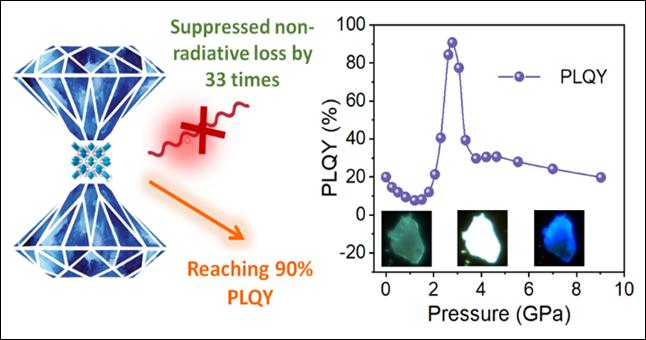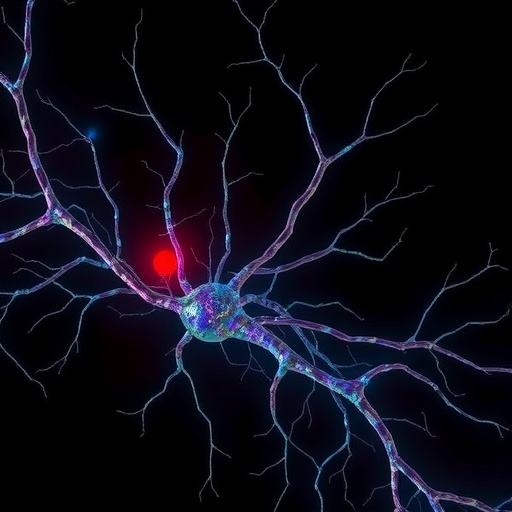
Credit: Xujie Lü
Low-dimensional perovskite-related metal halides have emerged as a new class of light-emitting materials with tunable broadband emission from self-trapped excitons (STEs). Although various types of low-dimensional structures have been developed, fundamental understating of the structure-property relationships for this class of materials is still very limited, and further improvement of their optical properties remains greatly important.
An international team led by Dr. Xujie Lü and Dr. Wenge Yang from the Center for High Pressure Science and Technology Advanced Research (HPSTAR) and Prof. Biwu Ma from the Florida State University discovered that pressure can sufficiently suppress the non-radiative loss in 1D metal halide C4N2H14PbB4, and lead to the photoluminescent quantum yield (PLQY) increasing from initial 20% to over 90% at 2.8 GPa. In-situ optical characterization and theoretical analysis revealed that the suppressed non-radiative loss is directly related to the pressure-tuned STE binding energy and confined motion of organic cations. Importantly, for the first time, PLQYs were quantitatively determined under gigapascal pressures. The findings were recently published in J. Am. Chem. Soc.
Pressure has been utilized as an effective and clean stimulus to regulate the structure and optoelectronic properties of various types of materials. The soft lattices of metal halides render them sensitive to pressure and lead to effective modifications under a mild pressure range. Despite exciting pressure-enhanced/induced emission results reported in hybrid metal halides, the microscopic origins are not fully understood yet. It is well-known that PL efficiency is highly dependent on the competition between radiative and nonradiative recombination rates. However, the influences of structural evolution on radiative and nonradiative rates, especially nonradiative rate, have not been well elucidated.
In this work, the team systematically investigated the pressure-dependent properties of the 1D hybrid metal halide C4N2H14PbB4. Previous studies found that C4N2H14PbB4 possesses strong electron-phonon coupling and exhibits a broadband emission with a PLQY of about 20%. During compression, the PLQY of STE emission was found to increase remarkably from 20% to 90%. Time-resolved optical measurements revealed that pressure induced a remarkably suppressed nonradiative loss by 33 times and a promoted radiative recombination rate by 18%, which together contribute to the PL enhancement. Both experimental and computational findings suggest that pressure modulates the STE binding energy and the molecular confinement, resulting in highly localized excitons with reduced scattering by defects and phonons.
This work not only discovers an effective approach to enhancing the PLQY of broadband emission in the 1D metal halide but also provides insights into the microscopic mechanisms that could guide future materials’ design for highly efficient low-D metal halides for light-emitting applications.
###
More information: Reaching 90% Photoluminescence Quantum Yield in One-Dimensional Metal Halide C4N2H14PbB4 by Pressure-Suppressed Nonradiative Loss, https:/
Media Contact
Haini Dong
[email protected]
Original Source
https:/
Related Journal Article
http://dx.




